|
Stone
Arch
Arch creation on monolithic
jambs...
|
|
|
Home - Concept
Overview
- Moulders
Manual - Limestone
Gallery
- Moulds
plans - Moulders
Workshop
- Site
MAP
|
|
Self-building
of a semi-circular arch on monolithic pillars. 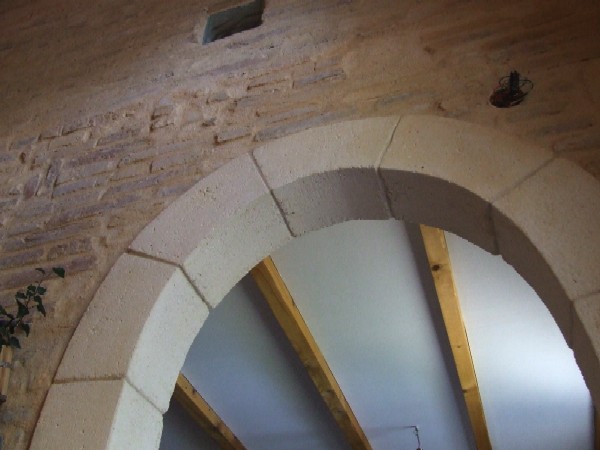 made of reconstituted
cut limestone,
on a wall made of traditional old
bricks. made of reconstituted
cut limestone,
on a wall made of traditional old
bricks.Remarks
:
- It's possible to make the surround, under the arch, with corner stones. Limestone cladding on air bricks or concrete blocks, or precast of full stones, could be made to realize the surrounding corner stones (quoins). See the plans available on the site… - The composition of the limestone mortar, the methods to cast and assemble the arch are in the Cut limestone moulder's manual. >>
Click on the pictures to
have a large view…
|
|
| The objective was here to build a wall with 16cm wide recovered old bricks, including two semicircular archs out of reconstituted stones of 20x20cm thickness and 140cm of opening. The wall is built on a conventional concrete foundation, followed with a first base line of concrete blocks that are filled of concrete. | 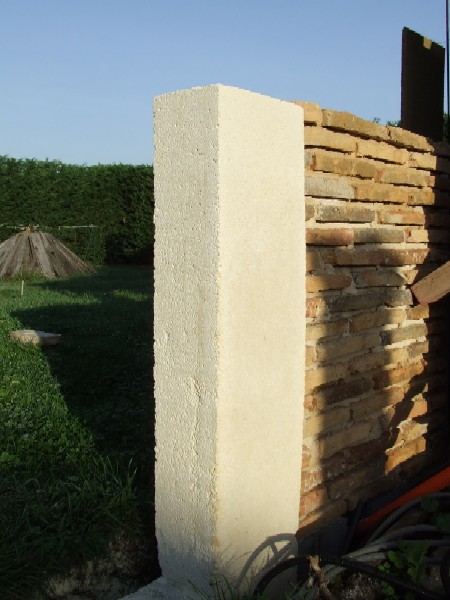 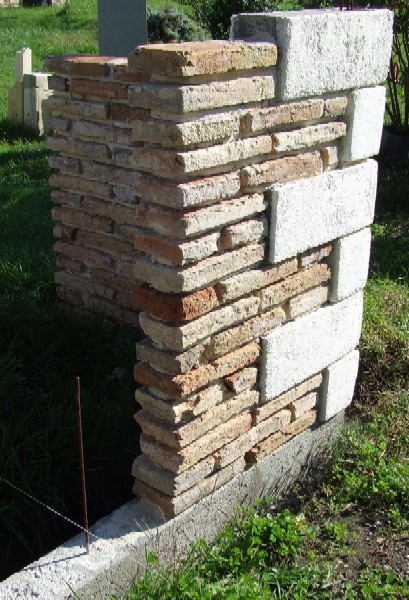 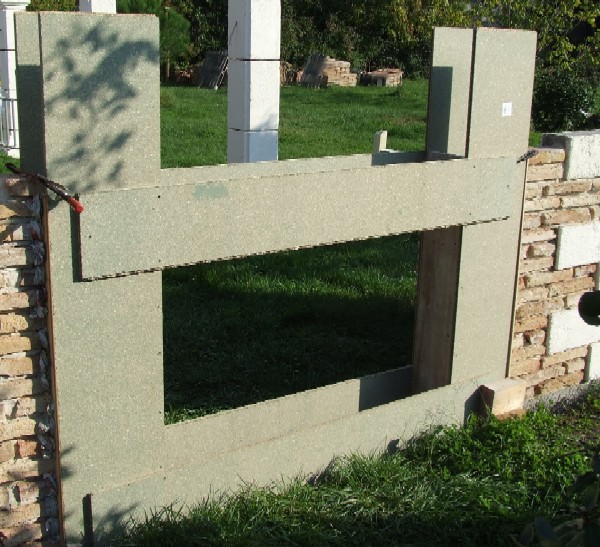 |
| The size of the monolithic jambs is of 110x30x20cm, with an opening of 140cm to receive the arch. The wall is assembled with lime mortar so that the bricks will be interdependent of the jamb, thanks to an incursion of 1 or 3 cm into the mould. The formwork is made of panels of water-resistant agglomerated wood of 60x180cm X 22 mm thickness and planks of pine of 27mm thickness. | 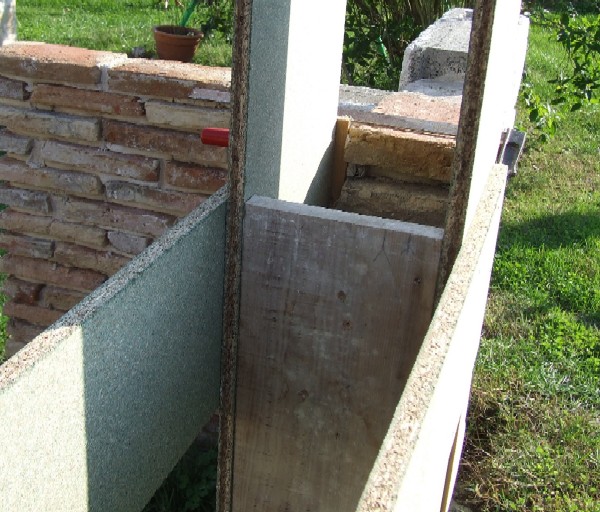 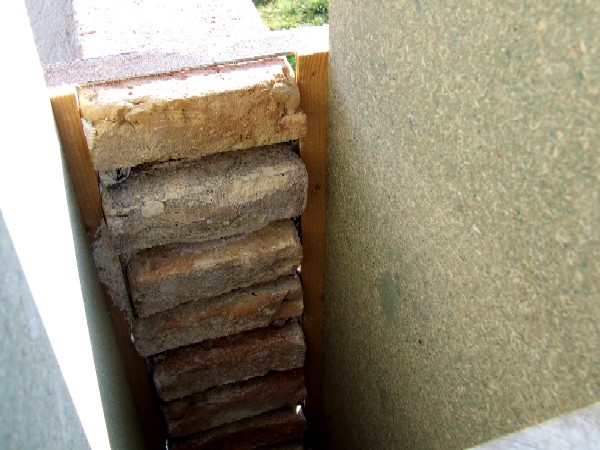 |
| The assembly of the formwork is realized by the mean of screws for wood, with an electric screw driver. Some falls of wood panneling are used to close the mould on the level of bricks. Some newspaper is used to fill in the holes. The formwork is fixed and reinforced with beams and clamps, to resist the concrete pushing during casting. | 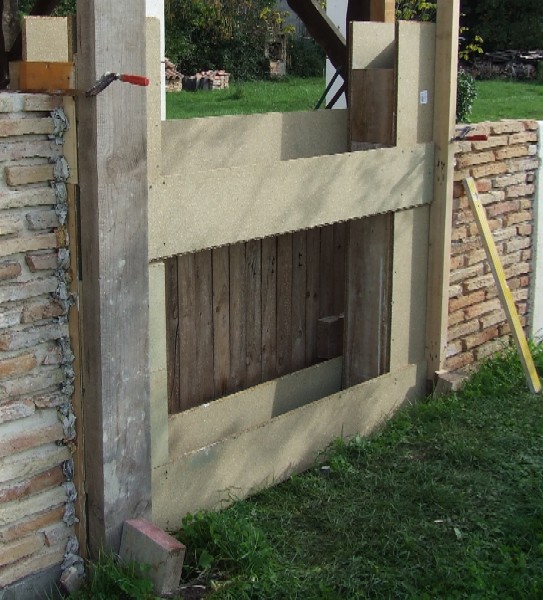 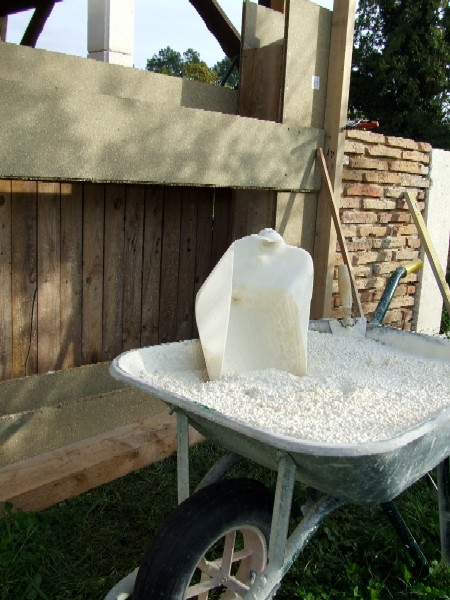  |
| After a given cure time, the mould is removed and a special hand-work is applied to the monoliths. Then, the base of the mould that had been used to cast the arch, is positioned on the jambs to serve as support for the arch assembly. The 7 elements of the arch, which were made in advance, are numbered and classed in the order where they were moulded. | 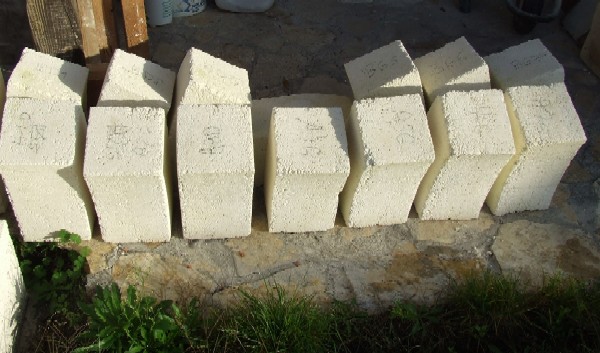 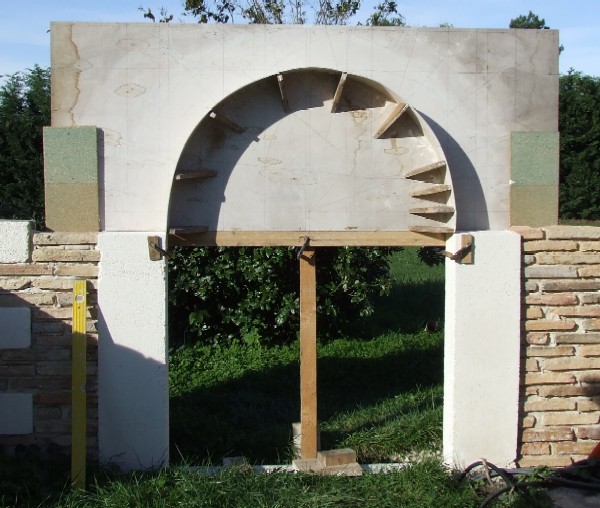 |
| It is the most delicate operation. The elements of the arch are assembled one by one with some lime mortar, by spreading mortar just in the center, between the stones, 5 to 8mm thickness and 70cm2 maximum area. It is necessary to make quickly, until the positioning of the key stone is done, to be able to readjust the stones if needed. A small push under the arch, using a stay, makes possible to adjust the positioning of the stones. | 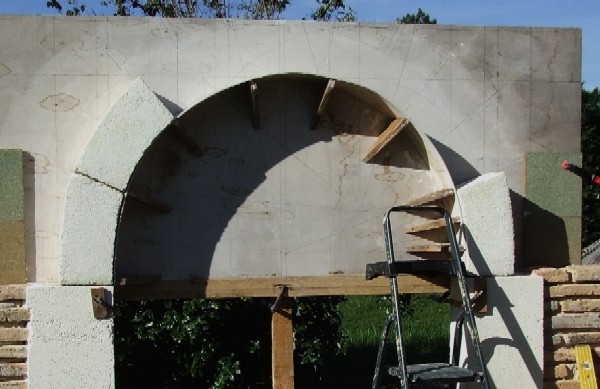  |
| A large ruler of mason and a spirit level are used to control the alignment of the stones, on both sides of the arch, progressively during the assembling. When the whole of the arch is correctly positioned, the stuffing of the joints then is begun. Then the mould support that becomes useless, can be removed to finish the stuffing of the joints, but not completely however… | 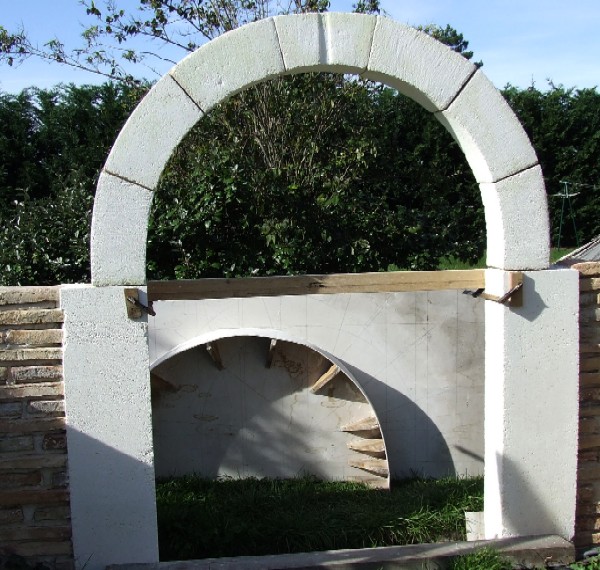 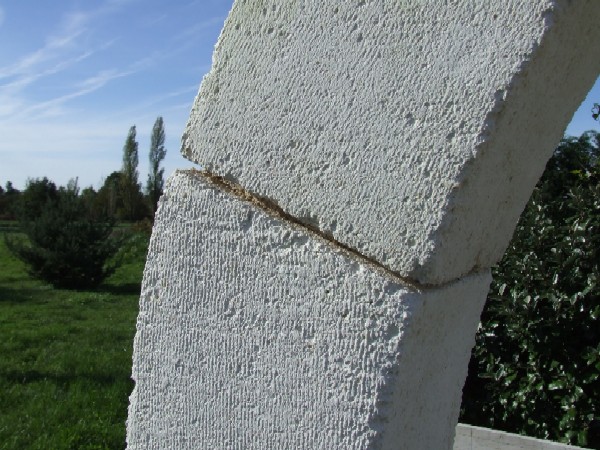 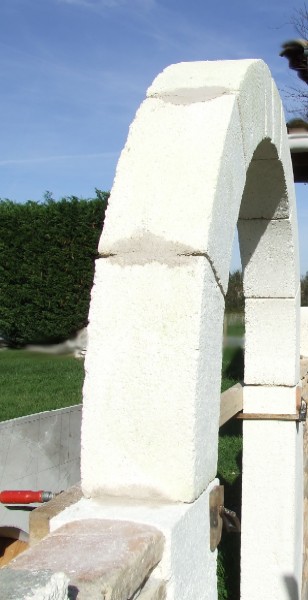 |
| It only remains to finish the construction of the wall around the arch. When the wall is finished, the joints of the bricks and the stones are finished with a white non-hydraulic lime mortar with part of not washed sand, charged of clay. The clay gives to the joints a beautiful natural colouring, at the old method. | 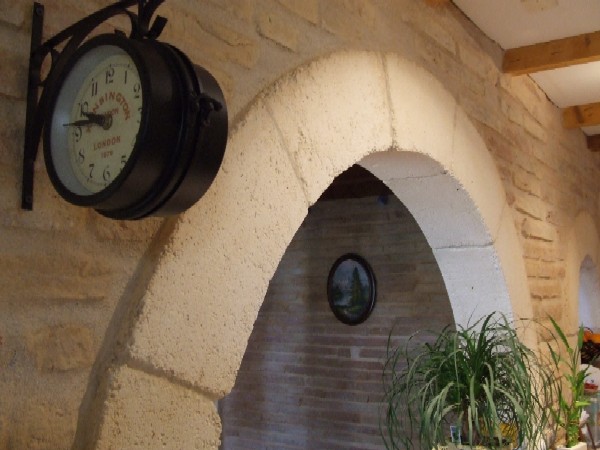  |
| Home - Concept
Overview - Moulders Manual
- Limestone
Gallery - Moulds
plans
- Moulders Workshop
- Partners - FAQ - Inpiration links - Site MAP - |
|


 Molds plans...
Molds plans... Back to
the Limestone Gallery...
Back to
the Limestone Gallery...